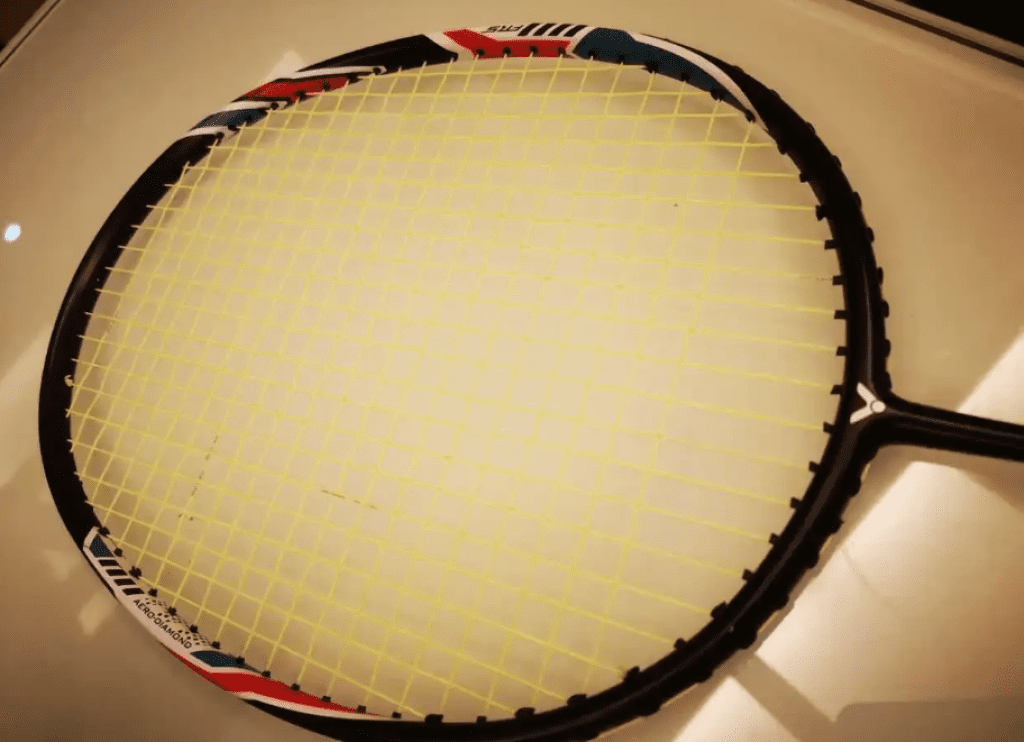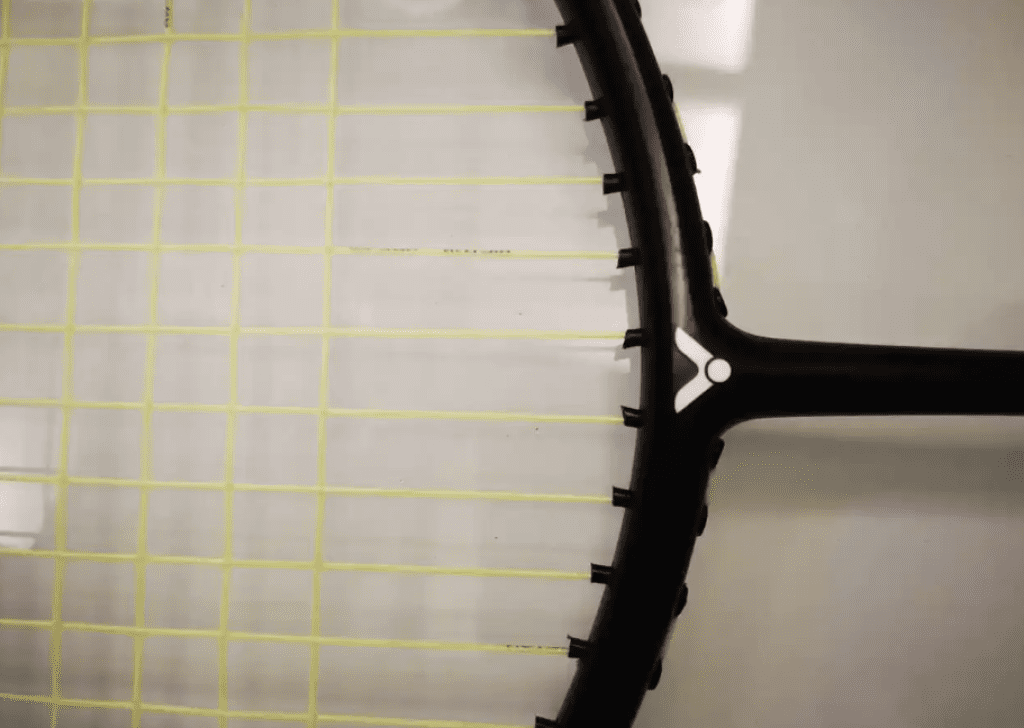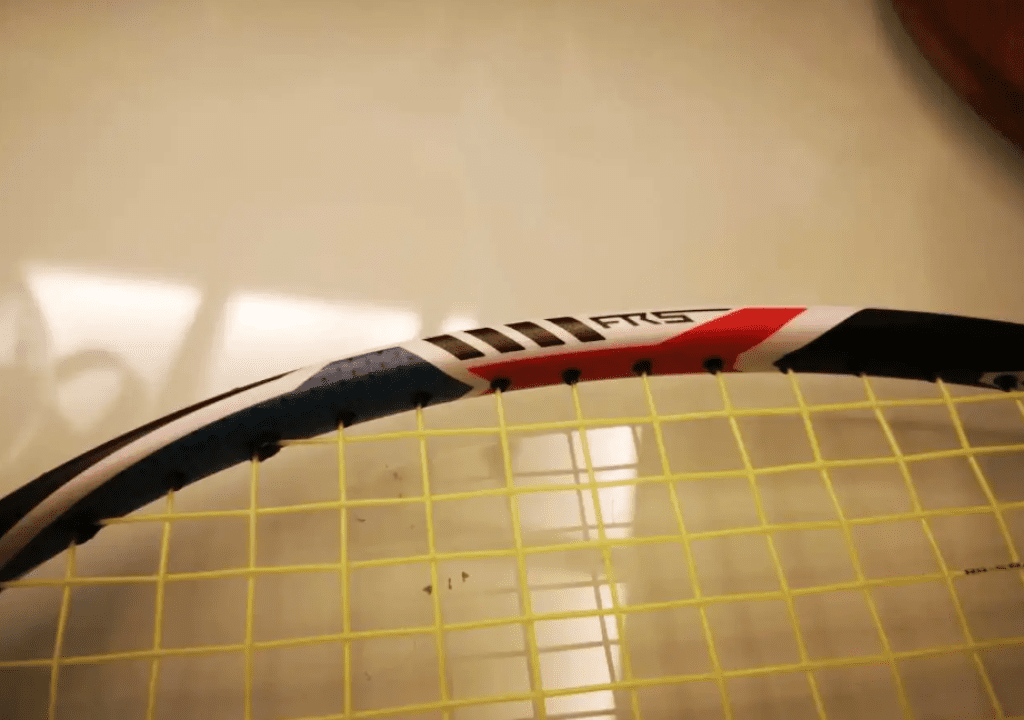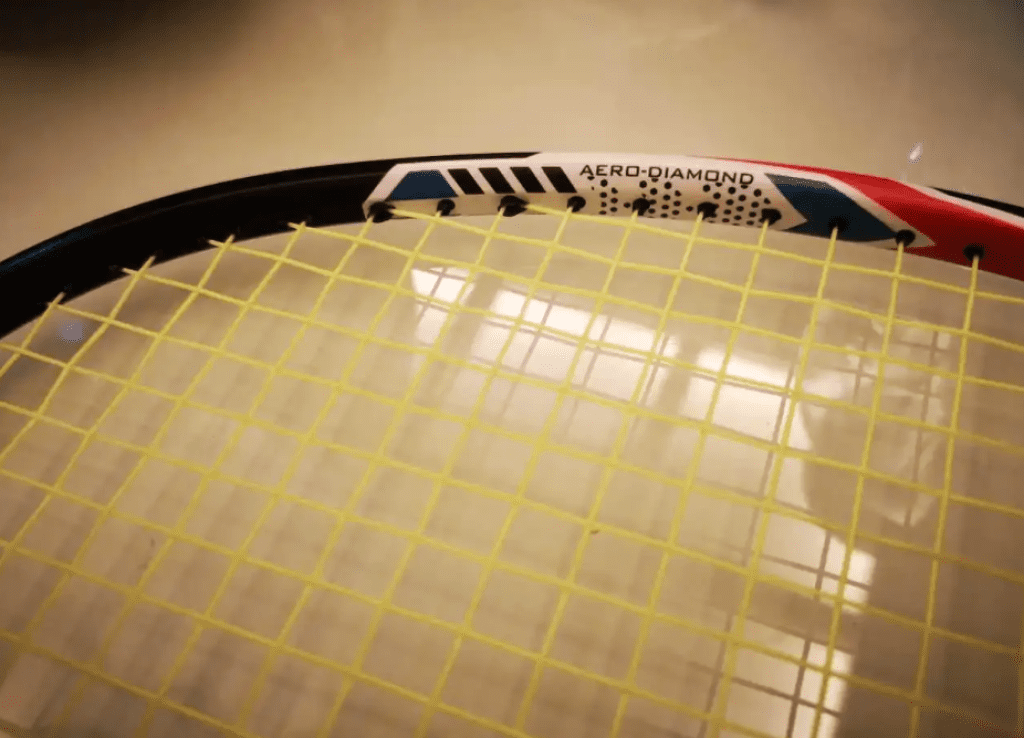Since high-end models are no longer available, the entry-level models can still be great for lifting spirits. I got the HX20H at a “what do you need a bicycle for” price and wonder if it has any surprises.
Parameters: 4UG5, stripped and fully equipped with a total weight of 86g, balance point 295mm, 6.8mm shaft length 210mm, soft tuning, 10-4 o’clock grommets, diamond aerodynamic frame, string tension 25 lbs with BG80P/VBS68.

Technology-wise, it’s all familiar stuff. For those who remember the Nano 7 era, this racket uses the FRS technology from the company’s Hammer series, making it a high-tension model with a 35-pound warranty. The design is quite youthful, with a white base and blue-black stripes. As an entry-level racket, it’s quite attractive, showing that design effort went into it, more so than the Yu 1L. However, the paint quality might be lacking; it chips easily and the traditional cone cap tends to get black marks.

The feel during empty swings is nimble. Although the diamond aerodynamic frame only slightly reduces wind resistance, the 4U balanced racket doesn’t require much power, so it gives a good feeling of maneuverability with low swing weight. This friendly setup should not make beginners feel it’s too heavy to swing. The shaft is soft and can easily deform, but it’s not as uncontrolled as some of the Hammer series. Given the 7.0mm shaft is a standard for entry-level Victory rackets, there’s not much to complain about.
During warm-up, I was initially a bit uncomfortable. Recently, I’ve been using balanced rackets less, so I had trouble adjusting the force for high clears. The shaft is indeed easy to drive, but with a light head, you need to put more effort into the shot; otherwise, the trajectory might be shallow or the landing not deep enough. Considering the string bed is an older BG80P, switching to a more elastic string like VBS68 improved the situation.

For doubles, the racket is really easy to handle. For example, in mid-court flat drives, the nimble feel persists, allowing for a slightly aggressive rally despite the lack of very crisp shots. For net opportunities, as long as small movements are well executed, it performs well. Despite being an entry-level racket, it offers a performance similar to ultra-light rackets in fast-paced games.

The backcourt smash performance isn’t as impressive. The racket is quite soft, making it easy to hit smashes with minimal effort, but the speed and power are average, and there’s a noticeable energy loss. For a balanced racket, the lack of head inertia means power transfer relies more on the shaft’s elasticity. For this entry-level shaft, there’s significant room for improvement, which explains why I sometimes find entry-level head-heavy rackets like the Hammer series have better elasticity and heavier smashes. While the smashing threshold is low and the downward feel is good, the shot quality isn’t very satisfying, but this isn’t the key competitive edge for an entry-level racket. Also, increasing the string tension on the HX20H doesn’t add much value.

The classic frame design still offers relatively stable handling and adapts well. The feel for net shots is reassuring due to the holding sensation, though it still has the “mushy” feel criticized in the Nano 7. Defense and receiving smashes are quite competent.
Another entry-level racket that’s obedient and easy to handle. Overall, it feels like a younger and more high-tension version of the Nano 7. Compared to the HX7SP, it offers good value for money and is worth recommending.

Leave a Reply